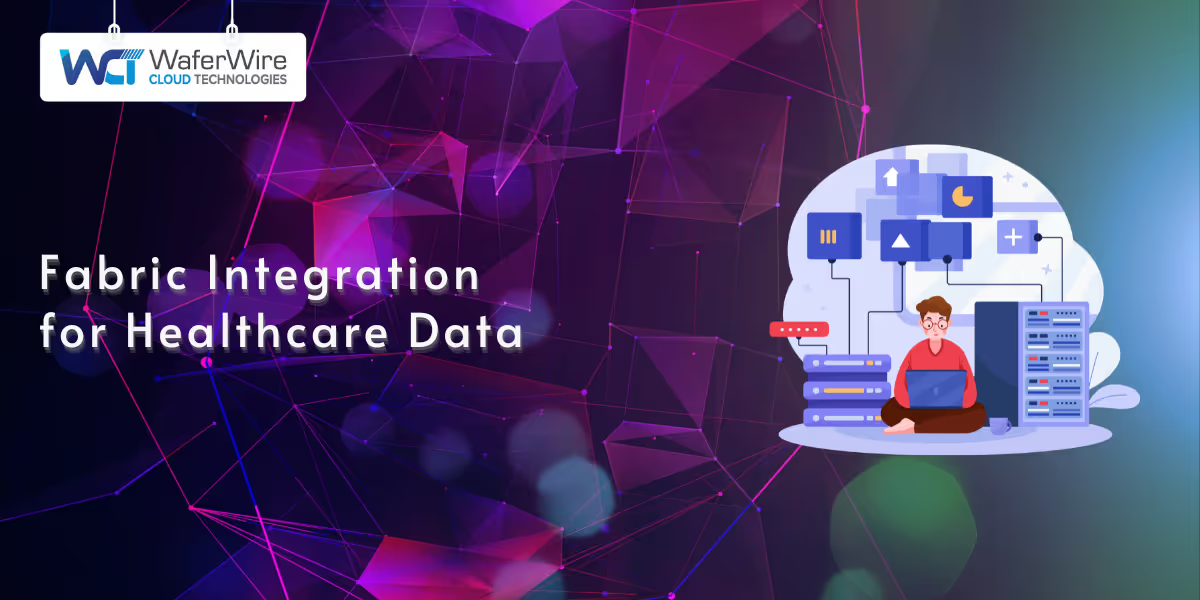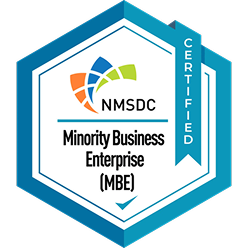

Every day, the healthcare ecosystem generates a tidal wave of data, from the details of patient records and the information within medical images to the promising research findings and the operational details of logs. In an observational study of 57 physicians in four specialties, 47.2 percent of clinic time was spent on the EHR and desk work, nearly double the time spent doing direct patient care tasks. These digital silos act as barriers, preventing seamless communication and creating significant obstacles.
This blog post explores how Microsoft Fabric offers a transformative solution for the healthcare industry, breaking down data silos and achieving the potential of its vast datasets.
The existence of data silos within healthcare stems from a confluence of factors, including the historical deployment of disparate legacy systems lacking inherent interoperability, the absence of universally adopted data formats and exchange protocols, legitimate concerns surrounding data privacy and security leading to restricted data access, and organizational inertia that can impede the adoption of modern, integrated platforms.
The ramifications of these data silos are substantial and detrimental to the healthcare ecosystem:
Also read: How can you achieve healthcare data security?
More than just a suite of data management tools, Microsoft Fabric represents a cohesive and all-encompassing analytics framework specifically engineered to navigate the unique complexities of contemporary healthcare data. Its fundamental capabilities offer a potent remedy to the challenges posed by the fragmentation of healthcare information:
With native and robust connectors like Fabric Data Factory and Azure Health Data Services (FHIR Datasets), organizations can effortlessly ingest a broad spectrum of data from traditionally disparate sources. This includes critical information in EMR/EHR systems, detailed clinical records, rich imaging data adhering to FHIR standards, crucial claims data, vital Social Determinants of Health (SDOH) data, and essential regulatory data. All this information can be seamlessly brought into the unified OneLake storage within Microsoft Fabric. Furthermore:
Organizations can implement the well-established and highly effective medallion architecture pattern utilizing Microsoft OneLake and its inherent Lakehouse capabilities. This architectural approach strategically organizes data across three distinct layers:
This multi-layered strategy establishes a single, authoritative source of truth for all enterprise data products.
The lakehouse architecture within Microsoft Fabric uniquely combines the advantages of both traditional Data Lakes and robust Data Warehouses. It stores data in an open and efficient file format (delta-parquet), enabling the execution of large-scale analytical workloads cost-effectively.
Healthcare organizations can also use the power of Microsoft Fabric's Synapse Data Engineering Notebooks, the low-code/no-code capabilities of Fabric Data Factory, and Real-Time Intelligence to develop highly scalable and robust data pipelines.
These sophisticated pipelines are designed to consolidate and transform data according to specific target data domains and analytics data stores, ensuring strict alignment with industry-standard data models such as FHIR. This adherence to established standards guarantees crucial interoperability and facilitates seamless data exchange across healthcare systems.
Furthermore, Microsoft Fabric's innovative User Data Functions empower developers to implement and readily reuse custom, specialized business logic within Fabric data engineering and data science notebooks. This significantly simplifies the process of building tailored experiences and enhances efficiency for a wide range of healthcare data initiatives.
To effectively access and derive meaningful, actionable insights from the wealth of healthcare data residing within Microsoft Fabric, organizations can leverage familiar and powerful tools:
These capabilities enable a wide range of critical healthcare applications, including detailed patient cohort analysis, sophisticated risk stratification models, the creation of comprehensive longitudinal patient views, and the delivery of personalized patient insights through custom Copilot and RAG-based applications.
Microsoft Fabric's robust platform operationalization, enhanced by Azure DevOps integration and a new CLI, empowers efficient and reliable data platform management.
Key highlights include:
Building on its commitment to build a comprehensive, multi-faceted healthcare data ecosystem and energized by positive user feedback on its initial healthcare data solutions preview, Microsoft is expanding its Fabric capabilities to address the intricate and privacy-sensitive realm of medical imaging data.
The introduction of imaging support within Microsoft Fabric's healthcare data solutions, now in private preview, empowers healthcare organizations to seamlessly ingest, securely store, and effectively analyze the metadata associated with various medical imaging modalities, including X-rays, CT scans, and MRIs.
This significant advancement unlocks new avenues for collaboration, cutting-edge research and development, and the acceleration of Artificial Intelligence (AI) innovation across diverse healthcare and life science applications.
This expansion of Microsoft Fabric's capabilities delivers several key advantages for healthcare organizations:
Imagine a regulated and centralized hub where all your diverse healthcare data, encompassing clinical records, imaging studies, and more, is organized and readily accessible. Fabric enables the creation of this foundational data estate, built natively on well-established industry data models such as DICOM, FHIR, and OMOP (Observational Medical Outcomes Partnership).
This unified repository lays the groundwork for sophisticated predictive and clinical analytics initiatives, breaking down the traditional silos between different types of healthcare data.
Researchers, data scientists, and health informaticians can construct more powerful and accurate Machine Learning (ML) and AI models with imaging data seamlessly connected to the broader clinical context. By training these models on a connected foundation of Electronic Health Record (EHR) data and the rich information contained within imaging pixels, the potential for achieving higher accuracy in diagnosis, improving prognostic capabilities, and ultimately leading to enhanced patient outcomes is significantly amplified.
Fabric's new imaging support facilitates the creation of longitudinal views of a patient's complete clinical journey, integrating their medical history with corresponding imaging studies. This integrated view enables researchers to perform complex queries to identify specific patient cohorts for research and collaborative studies.
Furthermore, Fabric incorporates tools for applying text and imaging de-identification techniques, allowing for the secure, in-place sharing of research datasets while adhering to role-based access control and maintaining patient privacy.
Healthcare organizations can leverage the cost-effective and highly reliable cloud-based storage offered by Azure to securely back up their valuable medical imaging data. This provides a compelling alternative to the often redundant storage infrastructure of on-premise PACS and Vendor Neutral Archive (VNA) systems, leading to significant cost reductions in archival storage.
Moreover, a 100% off-site cloud archival strategy for imaging datasets strengthens HIPAA compliance efforts. It significantly improves the organization's security posture during unplanned data loss, ensuring business continuity and data resilience.
By bridging the gap between medical imaging and clinical information, Fabric empowers healthcare organizations to unlock deeper insights, drive innovation, and ultimately deliver better patient care.
A successful adoption of Microsoft Fabric within a healthcare environment necessitates a carefully considered and strategic implementation roadmap:
1. Comprehensive Assessment of the Existing Data Ecosystem: The initial and crucial step involves a thorough understanding of the current state of all data-related systems within the organization. This includes meticulously identifying all relevant data sources (such as EHRs, medical imaging archives, research databases, etc.), rigorously evaluating the quality of the existing data, and clearly defining the overarching business objectives and specific analytical requirements.
2. Strategic Design and Development of Data Integration Pipelines: Creating robust and efficient data pipelines utilizing Fabric's Data Factory is essential for the seamless movement and transformation of data from its source systems into the unified OneLake repository. This critical phase requires careful consideration of diverse data formats, establishing clear transformation rules, implementing thorough data validation procedures, and establishing appropriate data scheduling to ensure timely and accurate data availability.
3. Establishment of Robust Security and Compliance Frameworks: Implementing the comprehensive security and governance features of Fabric and Microsoft Purview is non-negotiable. This includes defining granular access control mechanisms based on specific roles and responsibilities within the organization, implementing robust data masking and encryption techniques to protect sensitive information, establishing comprehensive audit logging procedures, and ensuring strict adherence to all relevant healthcare regulations and industry best practices.
Fabric is architected to integrate smoothly with the existing array of healthcare IT systems, providing robust support for common integration scenarios with widely used systems such as EHRs (e.g., Epic, Cerner), Picture Archiving and Communication Systems (PACS), Laboratory Information Systems (LIS), and financial billing systems. Furthermore, Fabric offers comprehensive support for key healthcare data formats and essential interoperability standards, including:
The potential applications of Microsoft Fabric within the healthcare domain are extensive and hold the promise of significant transformation:
By providing a unified and comprehensive view of patient data, Fabric empowers healthcare providers to develop more personalized and effective treatment strategies tailored to individual patient needs. Predictive analytics capabilities can identify patients at elevated risk for hospital readmission or the development of specific health conditions, enabling proactive interventions and ultimately leading to improved patient outcomes.
Operationally, Fabric can optimize the allocation of valuable resources, accurately predict equipment maintenance requirements, and significantly streamline patient flow within hospital environments.
Fabric's inherent ability to ingest and process a wide array of healthcare data formats, including FHIR and HL7, is fundamental to achieving true interoperability and enabling the seamless exchange of critical patient information between different healthcare organizations and systems. This fosters improved care coordination and ultimately leads to better patient outcomes.
Researchers can leverage Fabric's powerful analytical capabilities to analyze large and diverse datasets derived from clinical trials, comprehensive genomic studies, and real-world evidence. This will thereby accelerate drug discovery, facilitate the identification of novel biomarkers, and drive significant advancements in medical knowledge.
The seamless integration of artificial intelligence and machine learning tools within the Fabric environment further enhances the ability to extract meaningful insights from complex research data.
By aggregating and analyzing healthcare data across entire patient populations, Fabric can help identify prevalent health trends, significant risk factors for disease, and disparities in care delivery.
This valuable insight enables healthcare organizations and public health agencies to develop targeted interventions and implement effective strategies to improve communities' overall health and well-being.
Fabric's robust suite of security features and its deep integration with governance tools provide healthcare organizations with the means to effectively protect sensitive patient data and ensure compliance with stringent regulatory requirements.
Furthermore, advanced analytical techniques can be applied to identify anomalies and detect potentially fraudulent activities within healthcare claims and operational processes.
Microsoft Fabric offers a unified, scalable, secure, and cost-effective platform, marking a significant shift in healthcare data management. By overcoming the limitations of fragmented systems, Fabric unlocks the potential of healthcare data to revolutionize patient care, streamline operations, accelerate research, and ensure regulatory compliance. This data-driven approach fosters innovation, improving patient outcomes and a more efficient ecosystem.
Ready to experience Microsoft Fabric's transformative power for your healthcare organization? Contact WaferWire today for a consultation and discover how we can help you unlock your data's full potential.

